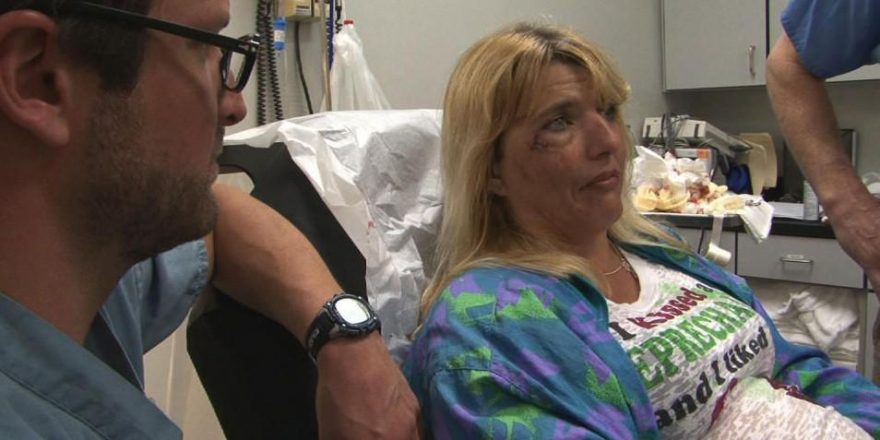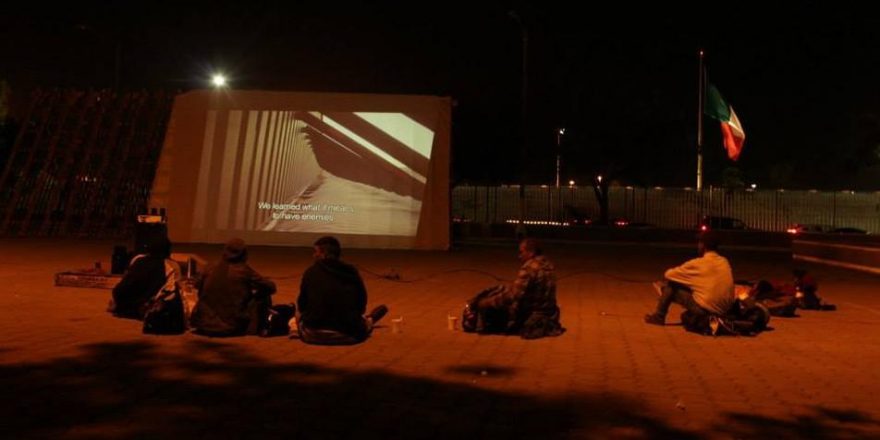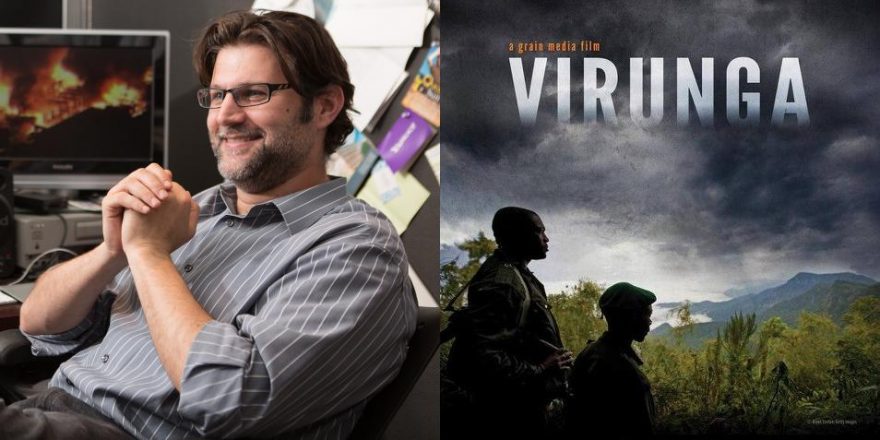Some documentaries explicitly engage in activism. They seek to shed light on an issue with the goal of making people vote or talk or consume in a specific way. These are films that, in a sense, come bearing action items. Then there are documentaries that push social and political issues into the background in order to focus on stories — slices of life or personal portraits. We happen to have made two feature documentaries that fall somewhere in the middle, and in an era in which audiences have, by and large, internalized the idea that documentaries can — and should — fill the space left empty by the evaporation of long-form journalism, this seems an increasingly harder sell.
Some refer to Remote Area Medical as “the healthcare movie” and This Time Next Year as “that Hurricane Sandy movie” — the descriptions are in quotations because they are convenient, if, to us, uncomfortable, shorthand for audiences and industry alike. Both films deal with hot-button issues but neither is driven by them. With Remote Area Medical, we wanted to make a mostly vérité record of a free pop-up healthcare clinic that takes place at a NASCAR speedway in Bristol, TN, where thousands camp out in a parking lot, sometimes for several nights, in the hopes of receiving basic services. We chose to avoid talking directly about politics and policy in the film, because statistics and bipartisan debate already dominate the way in which the healthcare crisis is discussed. We were more drawn to hearing about what life looks like in contemporary rural America — specifically in the particularly overlooked region of Appalachia — and to the deeper ramifications of living without care for decades on end.
On the festival circuit last year and during a series of more recent sneak previews, we’ve found ourselves constantly being asked, with disappointment or resentment and, once or twice, with something approaching anger, about everything Remote Area Medical did not do. “Why didn’t you ask these people how they voted? Why didn’t you take conservative politicians to task? Why didn’t you explain how the insurance system works? Why didn’t you delve into the role of food deserts or lack of health education in all of this? What is it you want me to do???” (One woman in D.C. very aggressively asked us what we were going to do to break the deadlock in the healthcare debate. Erm, make this movie?)
The longer answer to this line of questioning is always specific to the film; for us, reasons such as the desire to avoid knee-jerk reactions, or the impossibility of tackling every strand of an issue in a single film, are things meaningfully debated in the conception and editing of our work. The short answer, however — one that we suspect many filmmakers have felt but few say out loud, perhaps for fear of seeming glib — is: “Because we just didn’t.”
The fact that we all feel we can’t be more blunt speaks to an internalization of responsibility regarding “The Cause,” that regardless of how we chose to make the film, once it’s complete, we are now card-carrying representatives of The Cause. Both of us feel deeply and passionately about healthcare reform and are honored when some suggest that Remote Area Medical be used to challenge our broken system and hasten policy change. But we choose to be activists in real life and not in the films themselves. (The recent shutdown of a planned NYC Remote Area Medical clinic for political reasons felt, to us, like great fodder for an op-ed. Not a film.) And what’s scarier than an audience with such a narrow understanding of what a documentary can and should be is the pervasiveness of this mentality. What if critics, funders and distributors begin to place value on activist films only, thus institutionalizing a belief that those films that shy away from easy answers — or any answers — are inherently lacking?
In critic Neil Genzlinger’s negative New York Times review of Remote Area Medical, his essential frustration is that the film “refuses to take a stand or explore the questions it raises.” He bemoans that the film only makes “fleeting reference to the Affordable Care Act,” (never mind the fact that, when we filmed back in 2012, crucial provisions of the act that might have affected the lot of our subjects were years from being made active; though we would have chosen to focus on the lives of these people beyond specific politics anyway), and then passingly mentions that “broader issues that ought to be examined are not.” “Ought to be,” according to what documentary-film rule book exactly?
Rather than leveling criticism at the content of the film or even the filmmaking, Genzlinger seems upset Remote Area Medical didn’t just tell him how to think about health care, and is clearly miffed that a documentary touching on a contentious issue simply chose to show the depth of its consequences rather than step into the role of policy maker or expert and offer solutions. Smart critics of documentary (notably Eric Hynes and Robert Greene) have responded to the problematic nature of this kind of filmmaker/activist conflation on social media and in their writing. It is a debate worth having, considering this dangerously limited way of thinking about cinematic nonfiction is slowly clawing its way back into the media and the mainstream. Since when is there only one way to skin a cat?
Many of our most revered documentaries are political while not being activist or causal. Think of Chris Hegedus and D.A. Pennebaker’s take on feminism and gender politics in Town Bloody Hall, or many of Frederick Wiseman’s films, like Titicut Follies or Juvenile Court. There have always been explicitly activist or even propagandist nonfiction films, but once upon a time, critics and audiences alike seemed to have more patience for the indirect and ambiguous and observational in nonfiction films. Perhaps this is just wrong, a perception skewed by the flood of successful activist documentaries into the landscape thanks to changes in filmmaking technology. But sometimes it feels as though many lauded films exist more to service a call to action than the other way around.
Contemporary documentarians are still skillfully treading the filmmaking/activism/journalism line, however; consider the films of Laura Poitras, particularly her most recent, the thrilling CITIZENFOUR. It is a highly political film that exposes the American government’s massive intelligence-gathering activities, and tracks how that information was exposed to the public in real time. CITIZENFOUR is different from our films because Poitras herself is a deeply implicated participant in the story she is telling, and her film makes it very clear which side she is on. Yet because she does not address the camera or put up a placard at the film’s end offering an accessible solution or a website to visit, people must still occasionally ask Poitras, “But what is it you want me to do?” If a film as stridently engaged as CITIZENFOUR gets asked these questions, what is to be the lot of a film like Remote Area Medical? Is opening our eyes, increasing our compassion, and showing us something in the universe we likely hadn’t seen before not enough?







